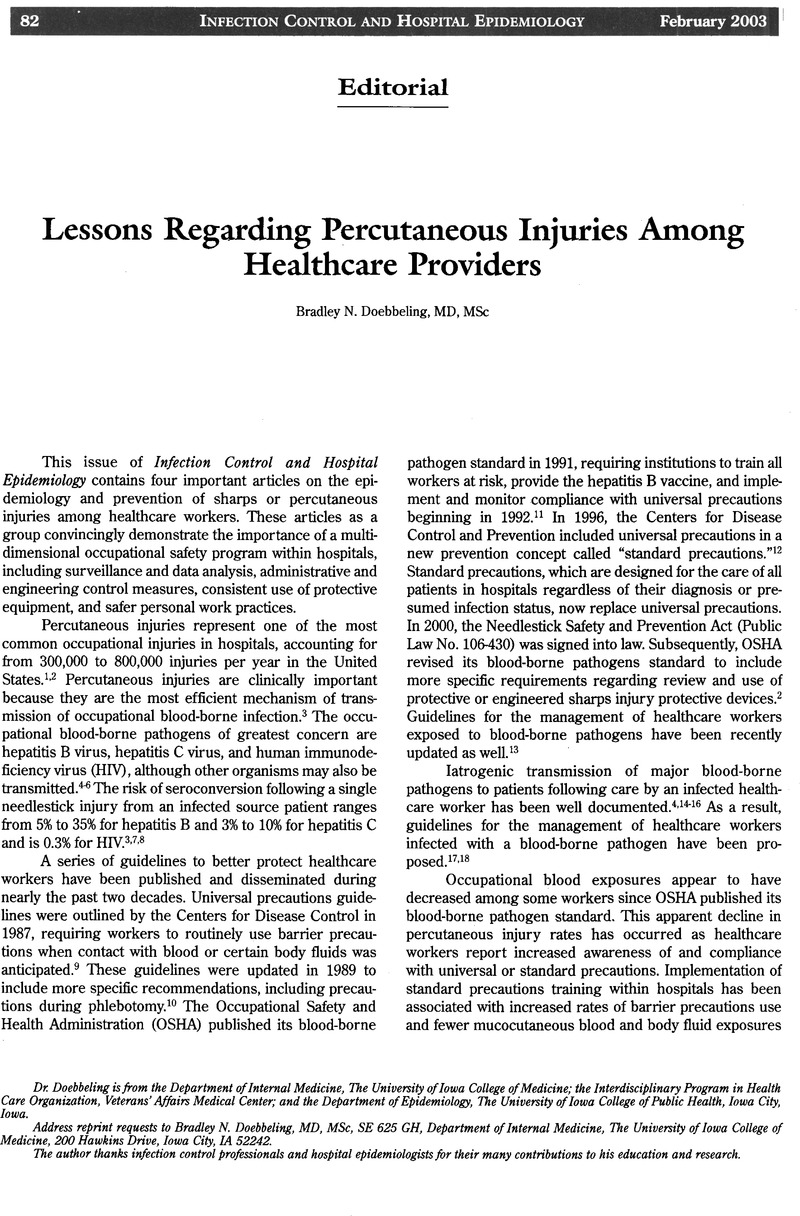Crossref Citations
This article has been cited by the following publications. This list is generated based on data provided by Crossref.
Askarian, M.
Honarvar, B.
Tabatabaee, H.-R.
and
Assadian, O.
2004.
Knowledge, practice and attitude towards standard isolation precautions in Iranian medical students.
Journal of Hospital Infection,
Vol. 58,
Issue. 4,
p.
292.
Marini, Michelle A.
Giangregorio, Maeve
and
Kraskinski, Joanna C.
2004.
Complying With the Occupational Safety and Health Administration's Bloodborne Pathogens Standard.
Pediatric Emergency Care,
Vol. 20,
Issue. 3,
p.
209.
Salazar, Rosa
Bischofberger, Cornelia
and
Fernández, Beatriz
2005.
Prevención de inoculaciones accidentales mediante la introducción de dispositivos de seguridad: un camino en marcha.
Revista de Calidad Asistencial,
Vol. 20,
Issue. 7,
p.
412.
Lamontagne, F.
Abiteboul, D.
Lolom, I.
Pellissier, G.
Tarantola, A.
Descamps, J. M.
and
Bouvet, E.
2007.
Role of Safety-Engineered Devices in Preventing Needlestick Injuries in 32 French Hospitals.
Infection Control & Hospital Epidemiology,
Vol. 28,
Issue. 1,
p.
18.
Askarian, Mehrdad
Memish, Ziad A.
and
Khan, Ashraf A.
2007.
Knowledge, Practice, and Attitude Among Iranian Nurses, Midwives, and Students Regarding Standard Isolation Precautions.
Infection Control & Hospital Epidemiology,
Vol. 28,
Issue. 2,
p.
241.
Garcia, L. P.
and
Facchini, L. A.
2009.
Exposures to blood and body fluids in Brazilian primary health care.
Occupational Medicine,
Vol. 59,
Issue. 2,
p.
107.
King, Sue
O’Keeffe, Jason
Edmonds, Deidre
and
Brett, Judy
2010.
Good ViBES – Results from a Victorian Blood Exposure Surveillance (ViBES) initiative 2005–2008.
Healthcare infection,
Vol. 15,
Issue. 3,
p.
71.
Sinnott, Michael
and
Shaban, Ramon
2010.
“Scalpel Safety,” not “Safety Scalpel”: A New Paradigm in Staff Safety.
Perioperative Nursing Clinics,
Vol. 5,
Issue. 1,
p.
59.



